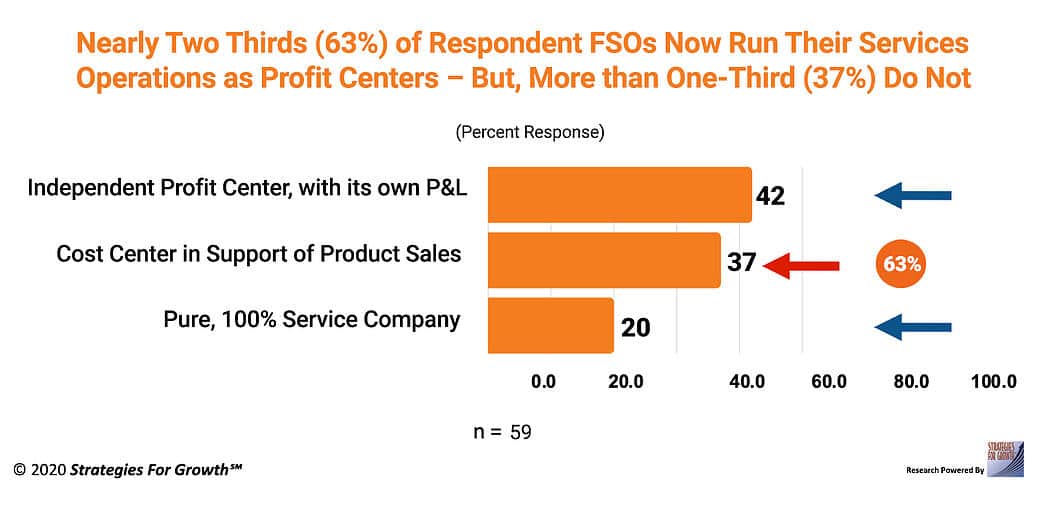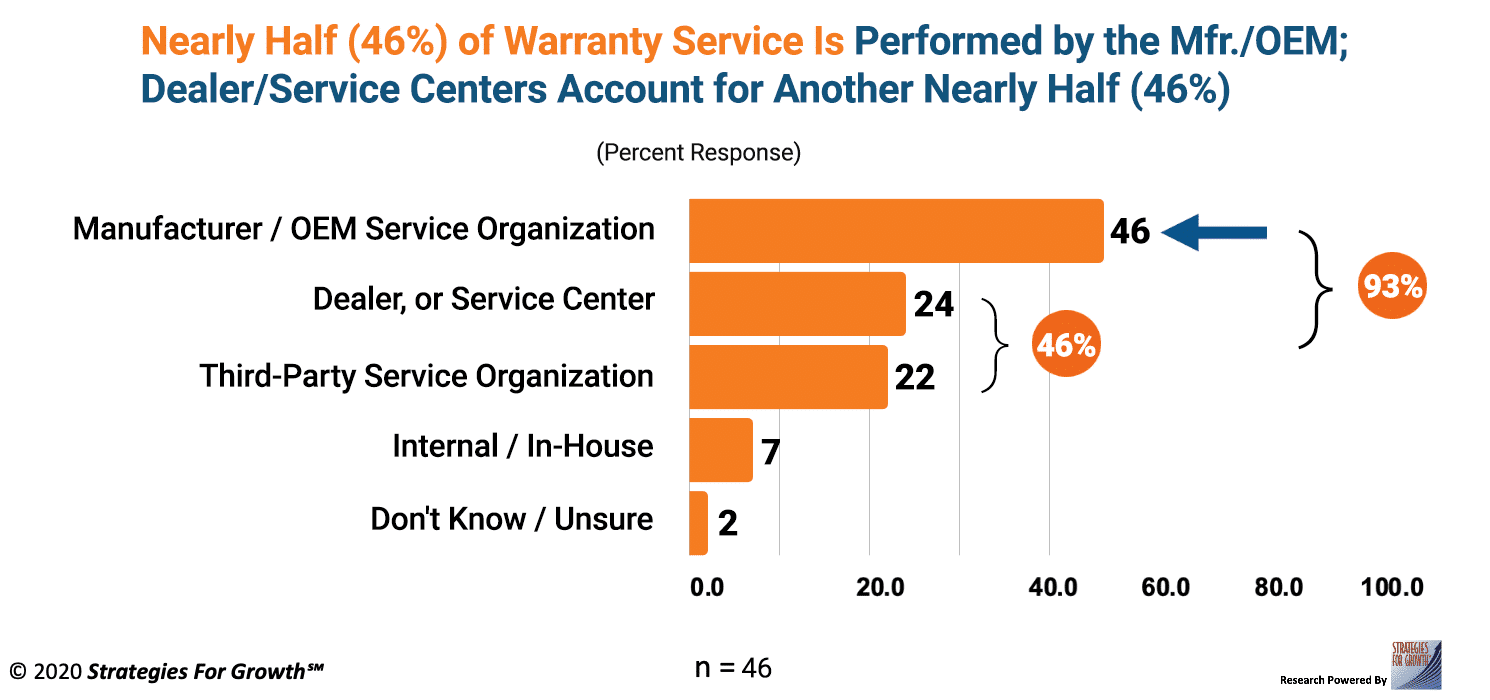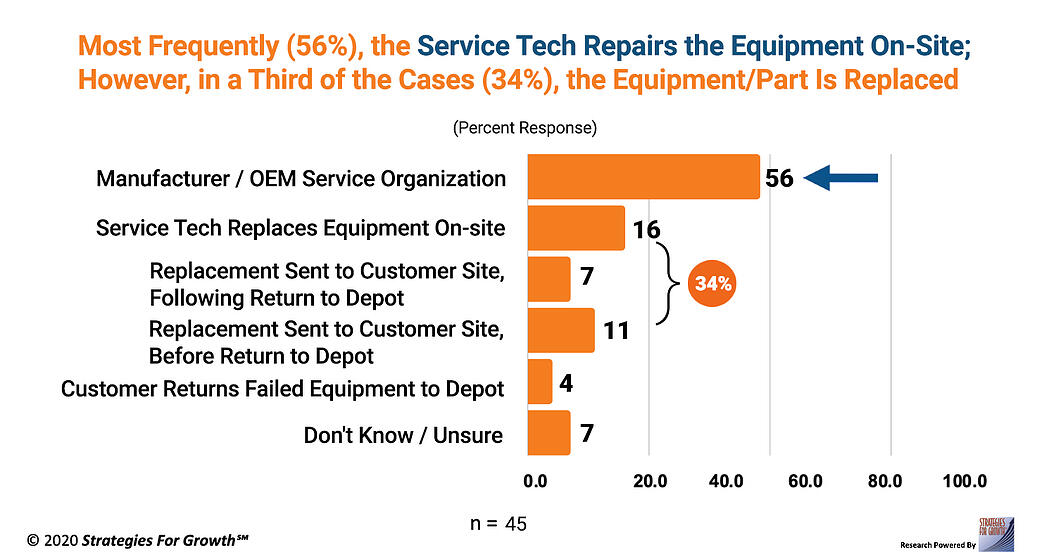
Trends in Extended Warranties
Recent Study Indicates Utilization of Warranty Management Strategy Ensures Recurring Revenue Streams
Strategies For GrowthSM (SFGSM) recently announced survey findings indicating positive signals for the expanding Warranty Chain Management market – customer-centric market factors drive organizations to improve existing levels of warranty management performance.
After conducting its sixth annual Warranty Chain Management (WCM) Benchmark Survey in 2020, Strategies For GrowthSM (SFGSM) compiled an Analysts Take paper, The Best Way to Utilize Warranty Management to Ensure Recurring Revenue Streams.
The survey results reflect signals for an expanding Warranty Chain Management market, despite the ongoing impact of the COVID-19 pandemic. In the post-event environment, the fruits of a proactive warranty management program will reflect the process works to stimulate overall revenue generation, stabilize an otherwise erratic revenue stream, and bolsters the organization’s bottom line. WCM has all the makings of a fast-growing market in 2021.
Putting Things in Perspective
Overall, survey respondents appear to focus on a cluster of customer-centric market factors driving their respective organizations to improve existing levels of warranty management performance. The top drivers cited are:
- 60% Post-sale customer satisfaction issues
- 43% Desire to improve customer retention
- 40% Customer demand for improved warranty management services
To effectively address these challenges – and strive to attain best practices – respondents then cited the following as the most needed strategic actions to be taken:
- 46% Improve Warranty Management–related planning and forecasting activities
- 43% Develop/improve metrics or KPIs for advanced warranty chain analytics
- 34% Restructure for improved Warranty Management oversight and accountability
The most common technology solutions currently being used by services organizations include:
- 83% Customer Relationship Management (CRM)
- 69% Enterprise Resource Planning (ERP)
- 59% Field Service Management (FSM) solution
- 55% Spare Parts / Inventory Management
- 52% Warranty Management
Current Levels of Satisfaction with Their Company’s Approach to Warranty Management
Overall, there appears to be a significant anticipated uptick in the percent of services organizations that expect to increase their extended warranty offerings over the next 12 months (i.e., throughout 2020, albeit with some disruption emanating from the pandemic). More than a third of respondent services organizations (38%) expect their extended warranty portfolios to expand in 2020, with nearly one-in-ten (9%) anticipating increases of greater than 25% (Figure 1).
With more than three times as many respondent organizations expecting to increase their extended warranty portfolio over those planning to decrease, the warranty chain management segment appears poised to deal with a growing market – and a commensurately large, expanded warranty business – as part of their overall services in the coming year.
The Percent of Services Organizations Offering Extended Warranties Has Increased Significantly, Year-over-Year, by a Ratio of More than 3:1

However, less than half (49%) of respondents are currently satisfied with their company’s approach to warranty management, suggesting a soft satisfaction as more than one-third of this percent are only somewhat happy, rather than extremely satisfied (i.e., 15%, or only one-in-six). More than one-third (36%) of respondents are at least somewhat dissatisfied with their company’s current approach. (Figure 2).
This indication reflects a fragile approach to warranty management by most companies. It suggests a significant vulnerability to switching warranty management solution providers and their solutions and, ultimately, looking for new vendors, new solutions, and updated strategies to manage their warranty portfolio.
In a review of the results of other applications of satisfaction/dissatisfaction survey questions, the ratio of those satisfied to dissatisfied is typically in the 2:1 to 3:1 range. However, in this case, the net rate is only 1.3:1, reflecting a very complacent and underwhelmed respondent base.
Less than half (49%) Are Currently Satisfied with Their Company’s Approach to WCM; But More than One-Third (36%) Are Not Satisfied

Top Strategic Actions Currently Being Implemented/Planned
The survey findings indicate the global warranty management community recognizes that it will need to update existing warranty pricing schedules (34%), refine metrics or KPIs for advanced warranty chain analytics (31%), and institute process workflow improvements for supplier cost recovery (31%). Implementing an automated warranty management solution (31%) was also a noted priority. These represent the top four strategic actions presently being taken by the global warranty management community (Figure 3).
These planned strategic actions reflect a community that already has a good understanding of the importance of pricing, tracking, planning, and forecasting – and recognizes that they will still need to improve these and other critical processes to bolster the bottom line and keep up with customer expectations.
Top Strategic Actions Being Planned by FSOs Are to Restructure/Update Warranty Pricing, Improve Analytics/Workflow & Acquire a WCM Solution

Most Commonly Used Technology Solutions
The most common technologies currently being used by services organizations are customer relationship management (CRM) (83%), enterprise resource planning (ERP) (69%), a field service management solution (FSM) (59%), spare parts/inventory management (55%) and warranty management (52%) (Figure 4). However, note this is the first time warranty management has been cited in any SFG WCM survey by more than half of respondents in the six years they have been conducting this survey.
Contract management, cited by 45% of respondents, is also at a survey response high over the past six years, reflecting a significant uptick in the importance of warranty/service contract management throughout the global services organization community.
Download the full report to see Figure 4:
The Most Common Technology Solutions Currently Being Used by Services Organizations Include CRM, ERP, FSM SP/IM; Only Half Use WM
Current Use of Outsourced Warranty Management Services
Roughly two-thirds (65%) of organizations currently manage at least some portion of their extended warranty portfolio in-house (with 35% outsourcing the entire warranty process, including service management). This creates an urgency to ensure the 65% have the most effective tools, resources, and partner relationships available to maximize the impact that sales of extended warranties can bring to the bottom line (Figure 5).
The most common outsourced activities are overall repair operations (50%) and returns/exchange management (50%). Other warranty management activities currently being outsourced include claims administration (45%), spare parts planning and inventory management (40%), and reverse logistics (20%).
35% currently outsourcing the entire warranty process, reflects the highest percent for this category in the six years SFG has been conducting this tracking survey
Download the full report to see Figure 5:
Half of the Respondents (50%) Outsource Their Repairs and Returns/Exchanges; Just Over One-Third (35%) Outsource the Entire Warranty Process
All the signs in this survey are pointing to a great new year for warranty program management. Syncron is looking forward to helping you continue to grow. If you want to learn more about Service Lifecycle Management, or need help optimizing your warranty management program and drive reoccurring profits, have a look at Syncron.
Source: Strategies For Growth
The data and analysis contained in the paper are based on the results of SFG’s WCM survey. The global respondent base for this survey was 107 warranty management professionals.